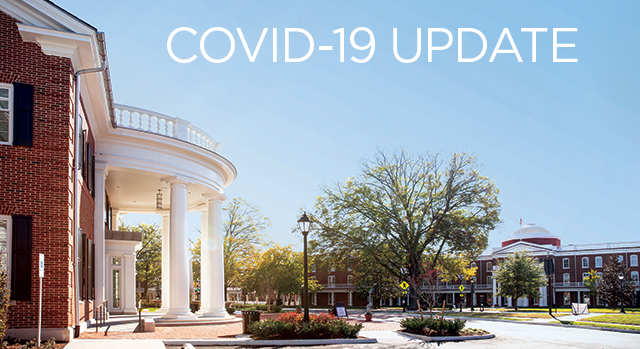You may be aware that Gov. Northam has required each institution of higher education in Virginia to submit detailed plans covering all aspects of their reopening plans for the fall.
Longwood found out today that its plan—which was submitted last month—has been approved by the State Council of Higher Education for Virginia (SCHEV).
The plan includes multiple aspects of dealing with the Covid-19 pandemic, including
—Social distancing
—Hygiene
—Housing and dining adaptations
—Protections for vulnerable individuals
—Workplace safety measures
—Health care policies and resources
—Procedures for responding to positive Covid-19 cases
—Communicating with the campus and local community
Longwood’s comprehensive planning documents, which are available on Longwood’s main Covid-19 website, were reviewed by SCHEV and the Virginia Department of Health. Approval means that the plan contains all 26 required components. It will continue to evolve and be updated along with changing guidance and as planning continues.
A key part of the planning for fall is rearranging classrooms so that every student and faculty member inside is socially distanced. Leading this effort at Longwood is Russ Carmichael, director of planning and real estate services, who says the university’s plan exceeds Centers for Disease Control guidelines for social distancing inside buildings.
Longwood’s rearrangement of the chairs, tables, desks, lecterns and other furniture in every classroom on campus will result in at least—if not more than—6 feet of distance between all students and faculty while they are in class, he said.
“We began the process by taking measurements of each room and coming up with an estimate of what we could fit into each space. We then fed the dimensions of each classroom and existing furniture into a space-maximization computer program,” Carmichael said. “It returns a recommended arrangement. We use the computer output to best arrange furniture in a way that maximizes class seating availability while ensuring we aren’t compromising any spacing specifications.
“Each classroom is being assessed multiple times to ensure that social distancing is followed,” he added.
Because of the spacing requirements, each classroom will lose between 50 and 60 percent of its capacity, which means, for example, that a classroom with a normal capacity of 40 people will now be able to accommodate fewer than 20.
“It’s going to require some creativity when Academic Affairs staff assign classes to their rooms, but we can do it,” Carmichael said.
I hope you’ll take a few minutes to read the full Q&A with Carmichael, which you can find here.
—Sabrina Brown

